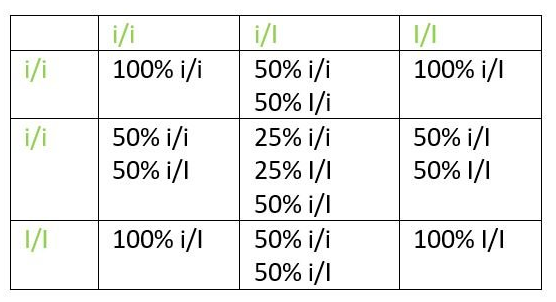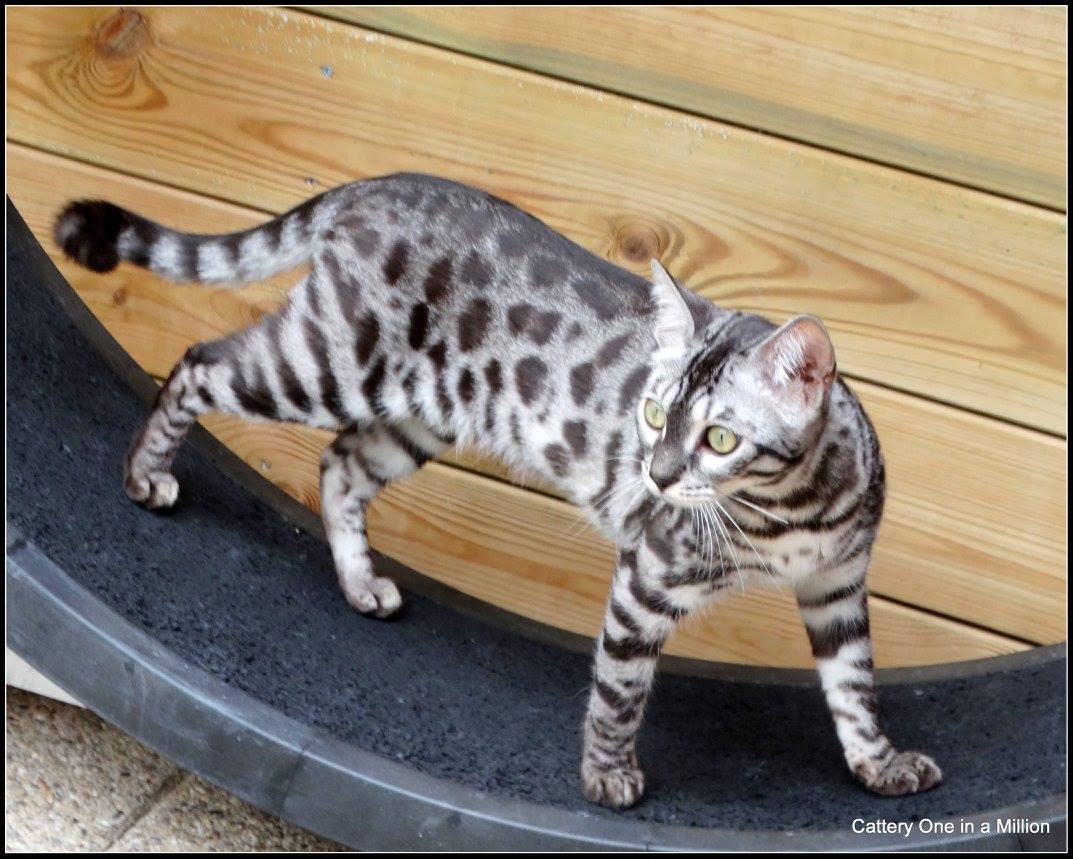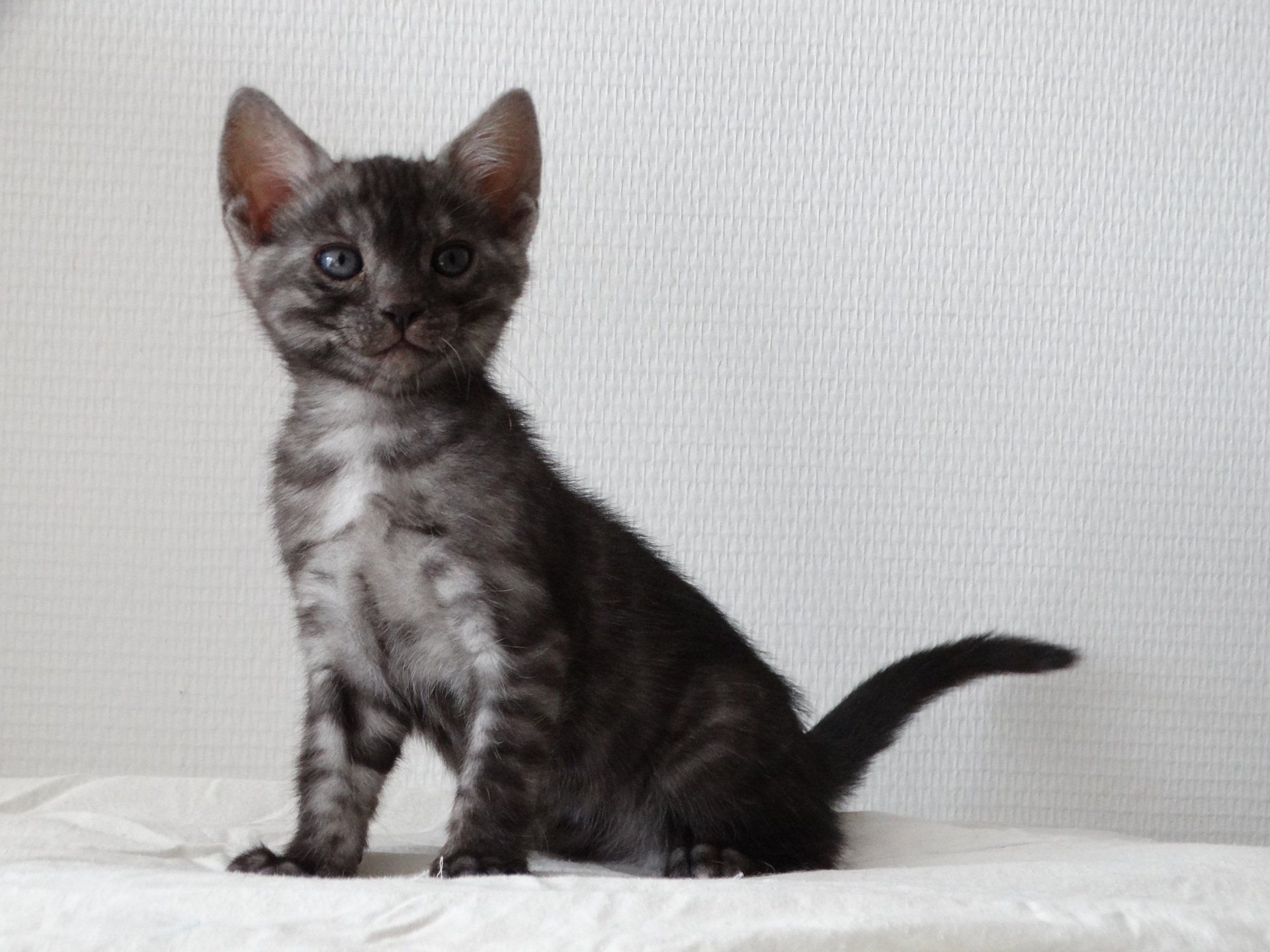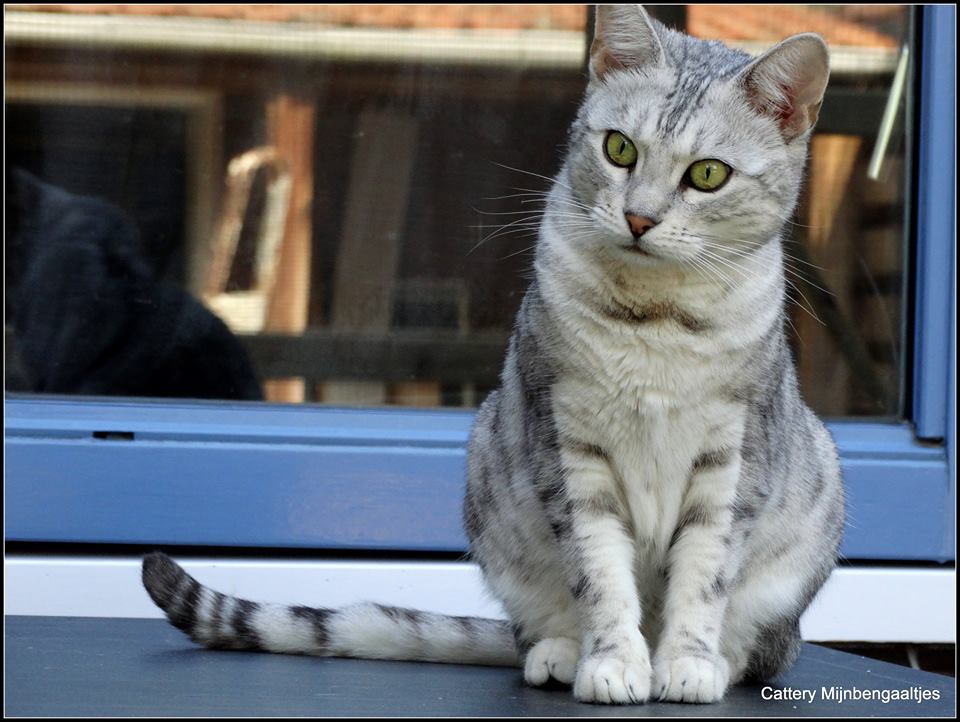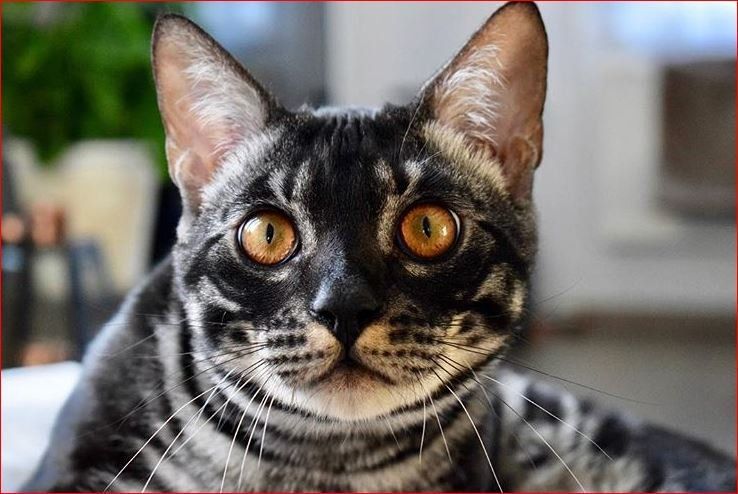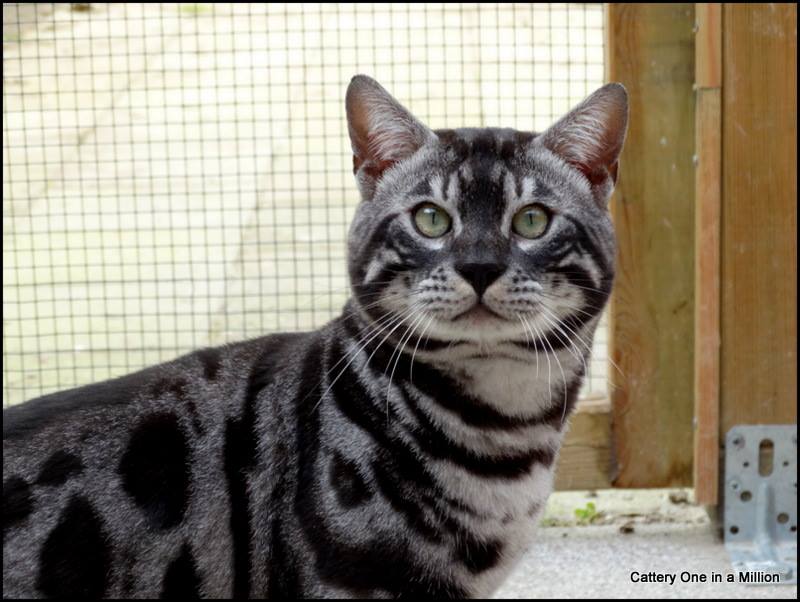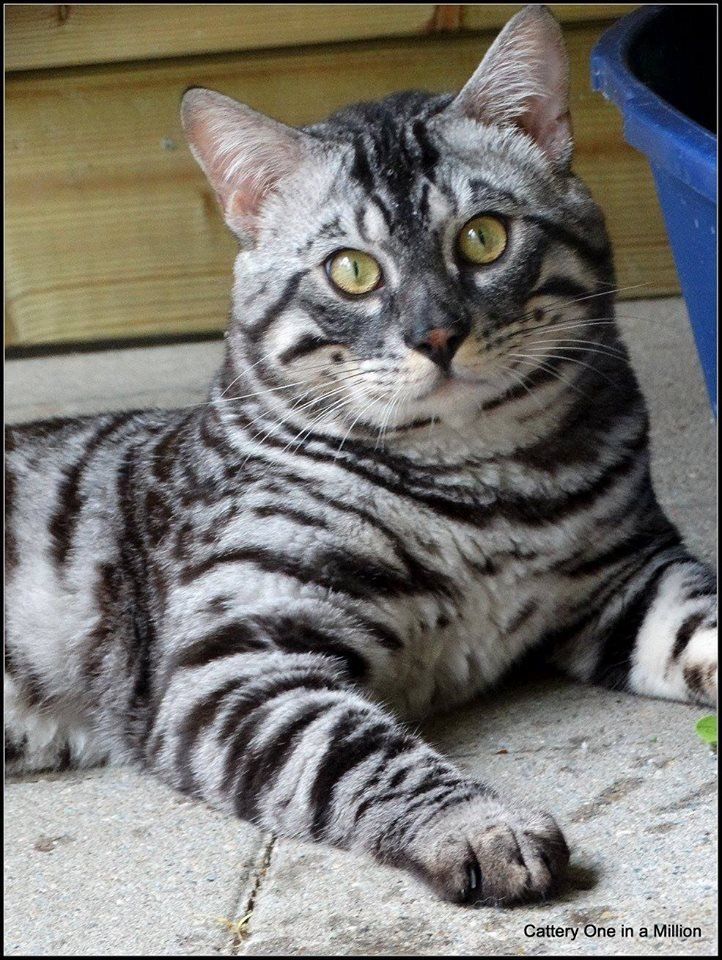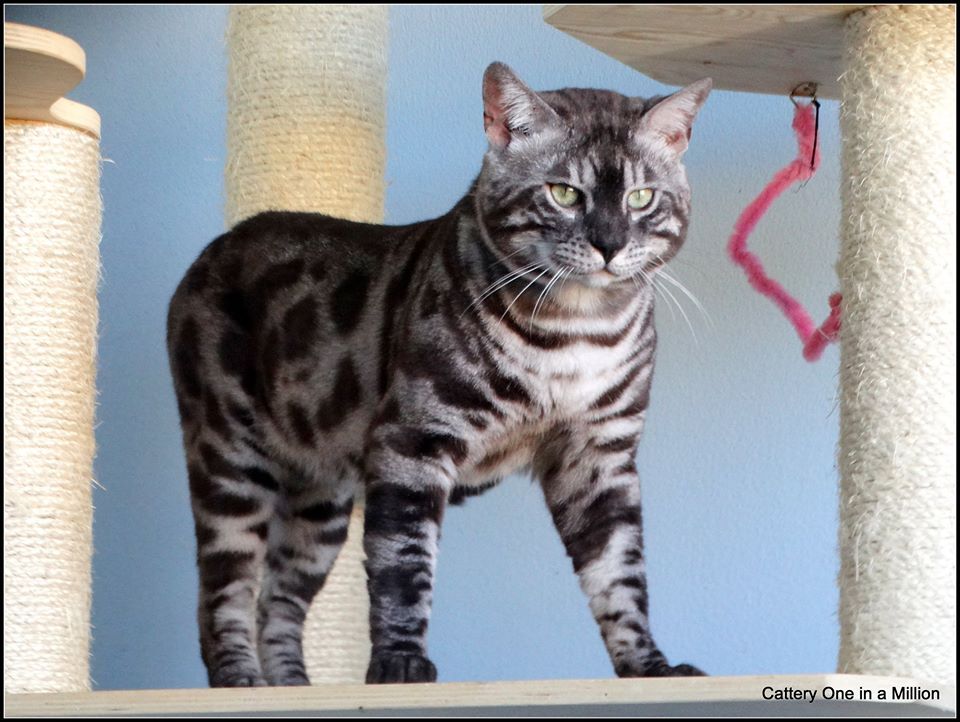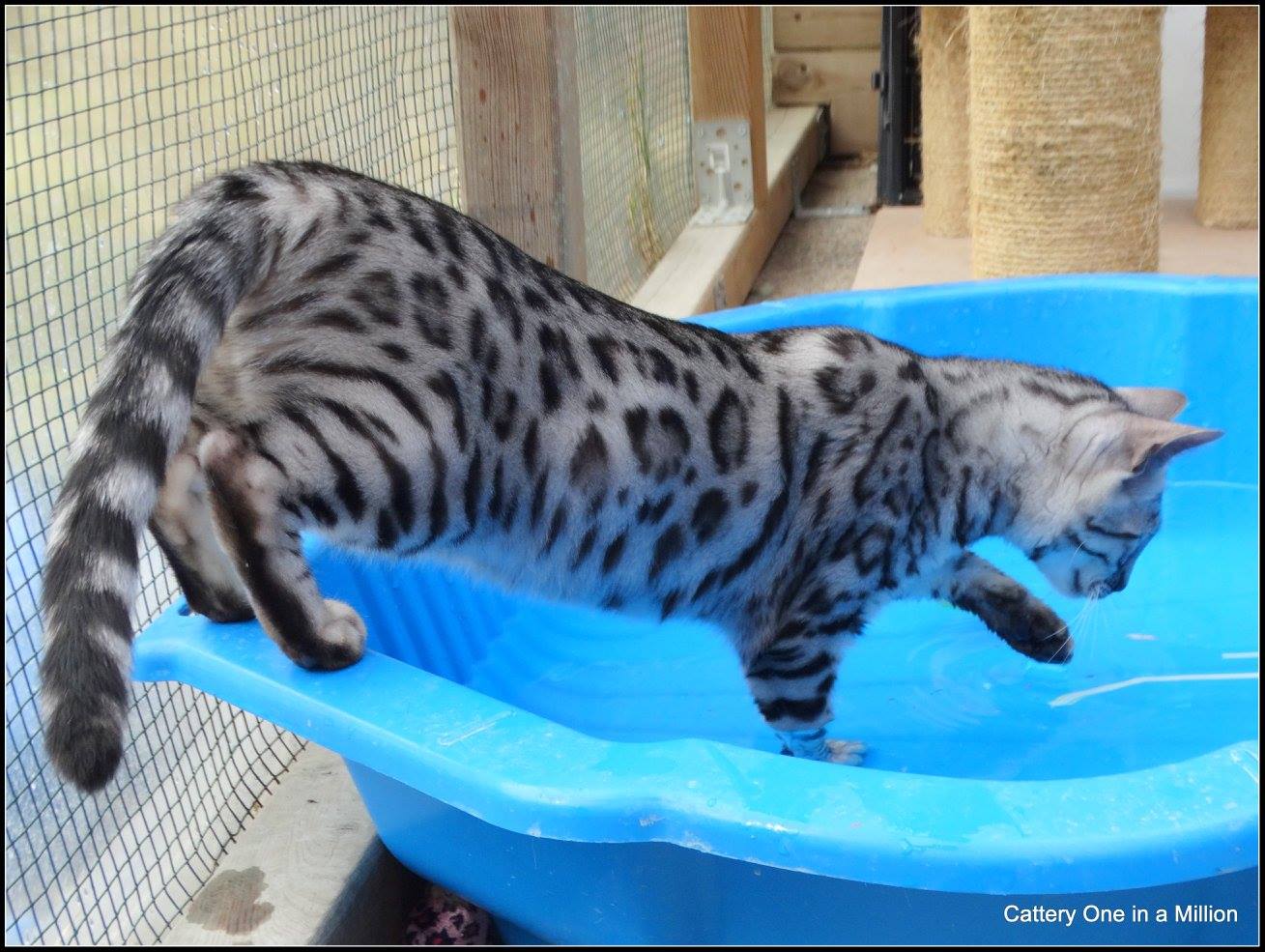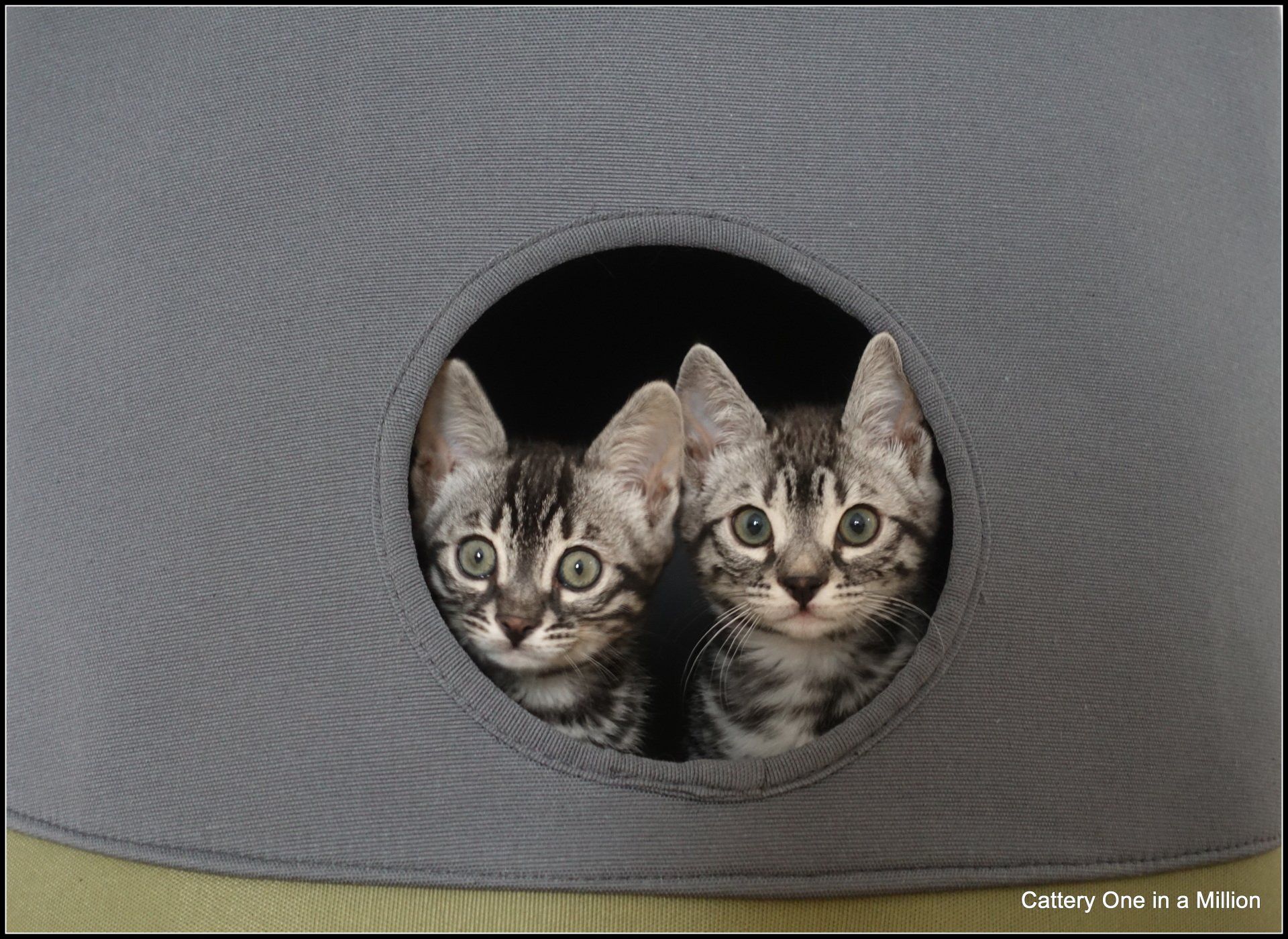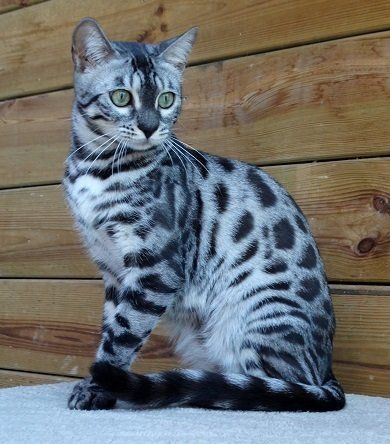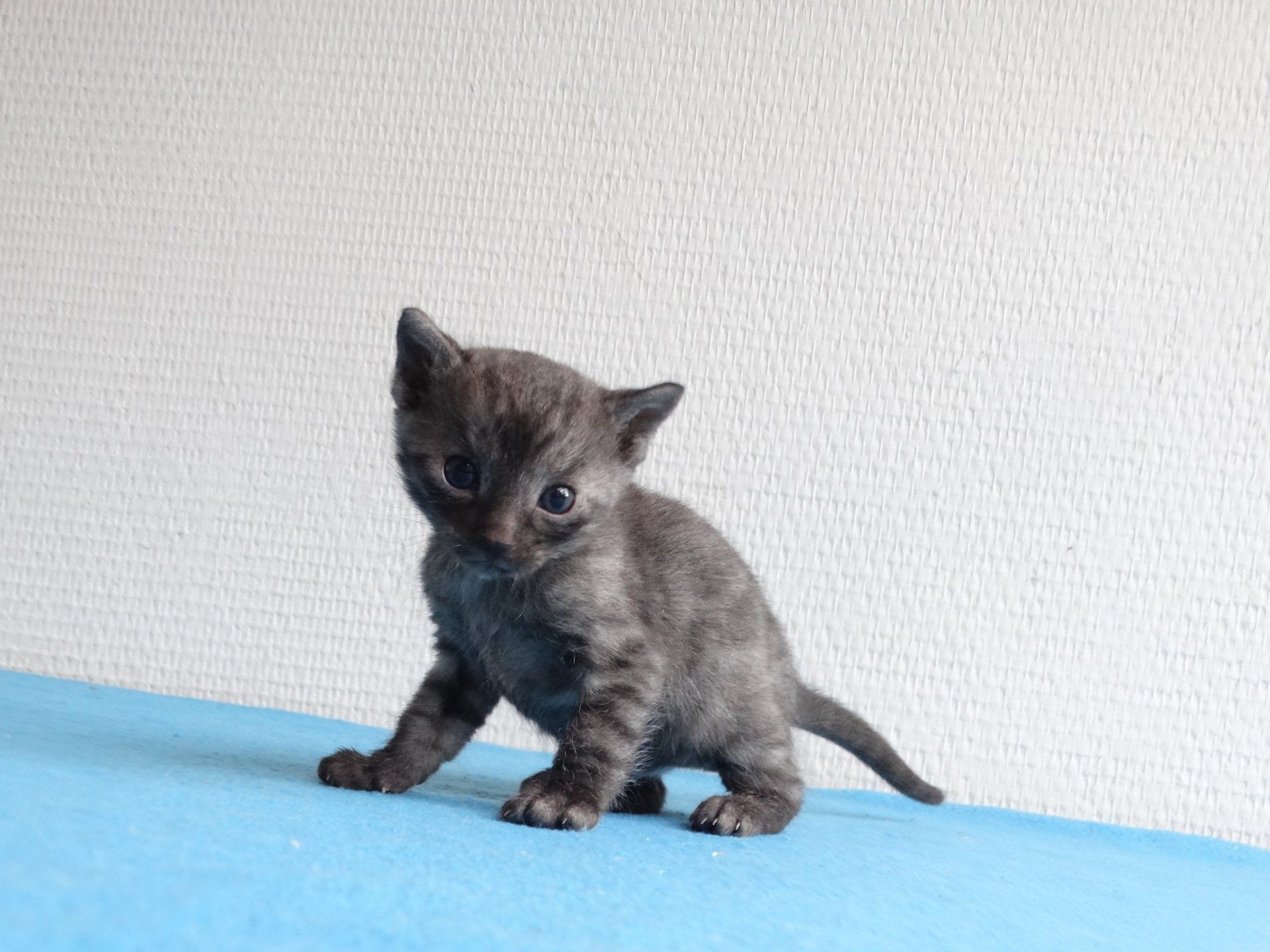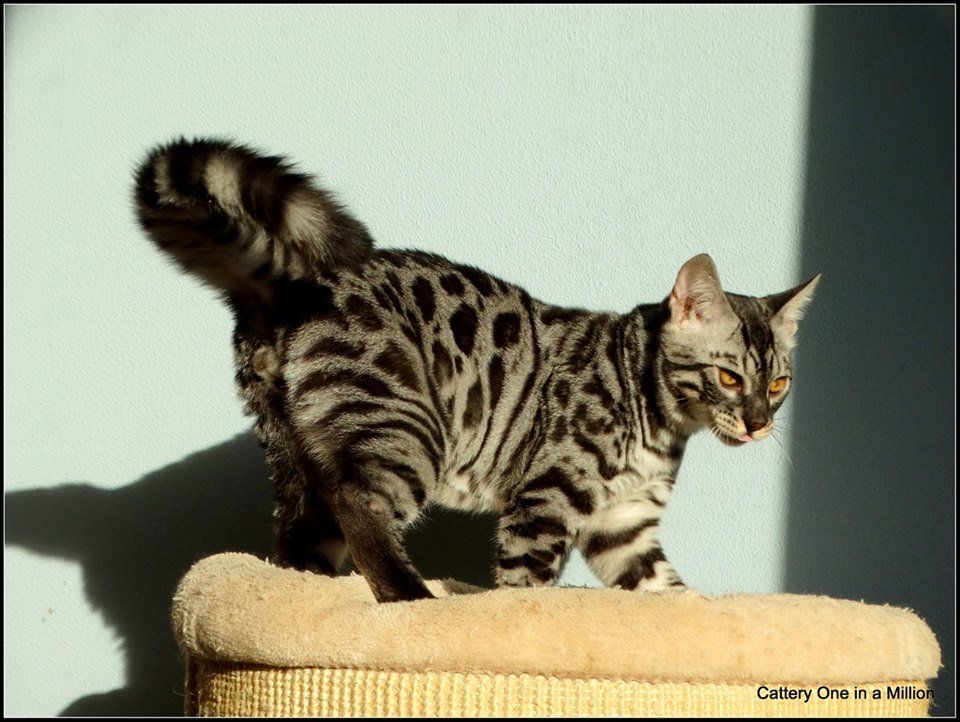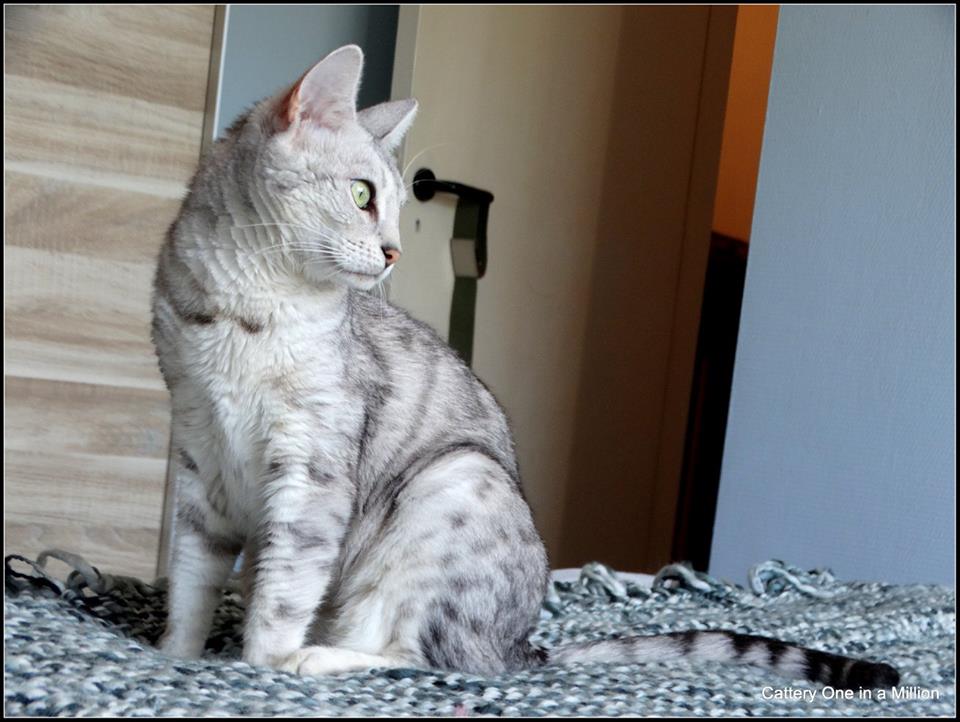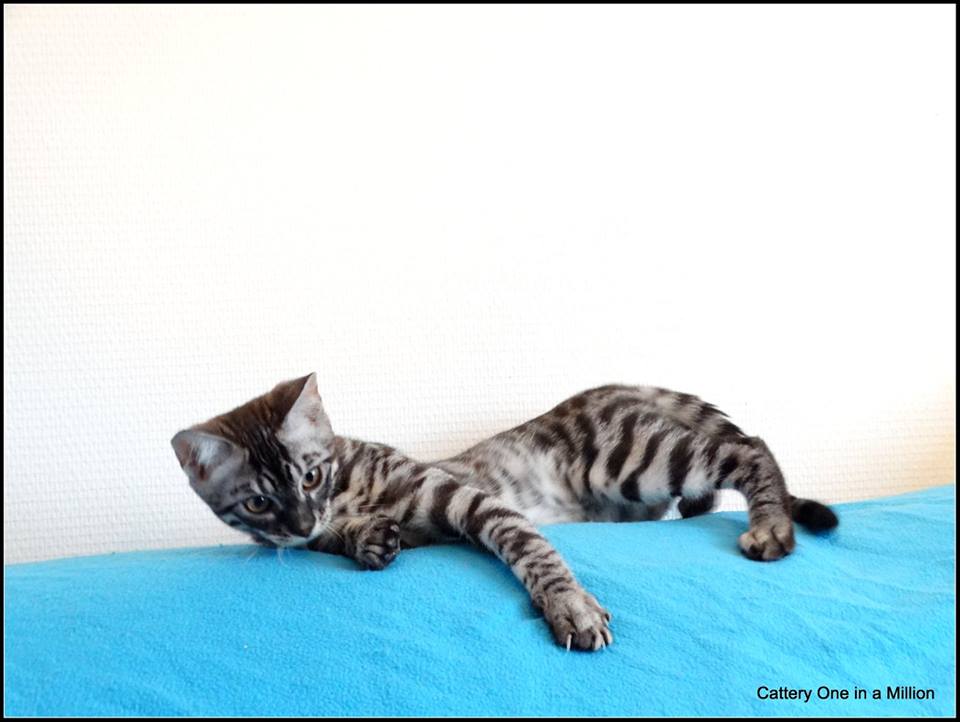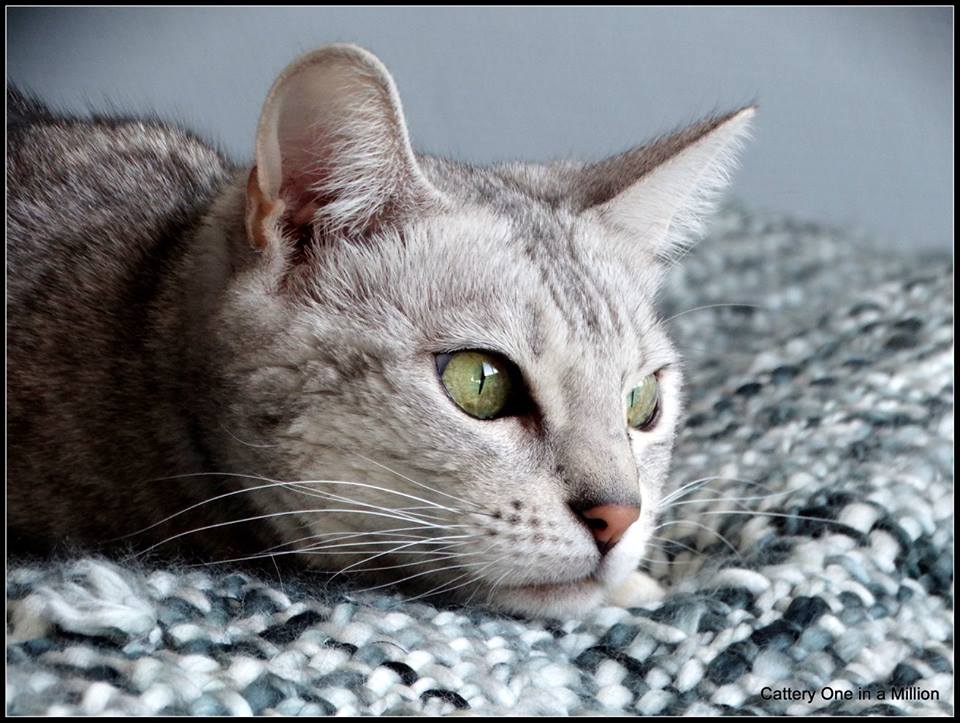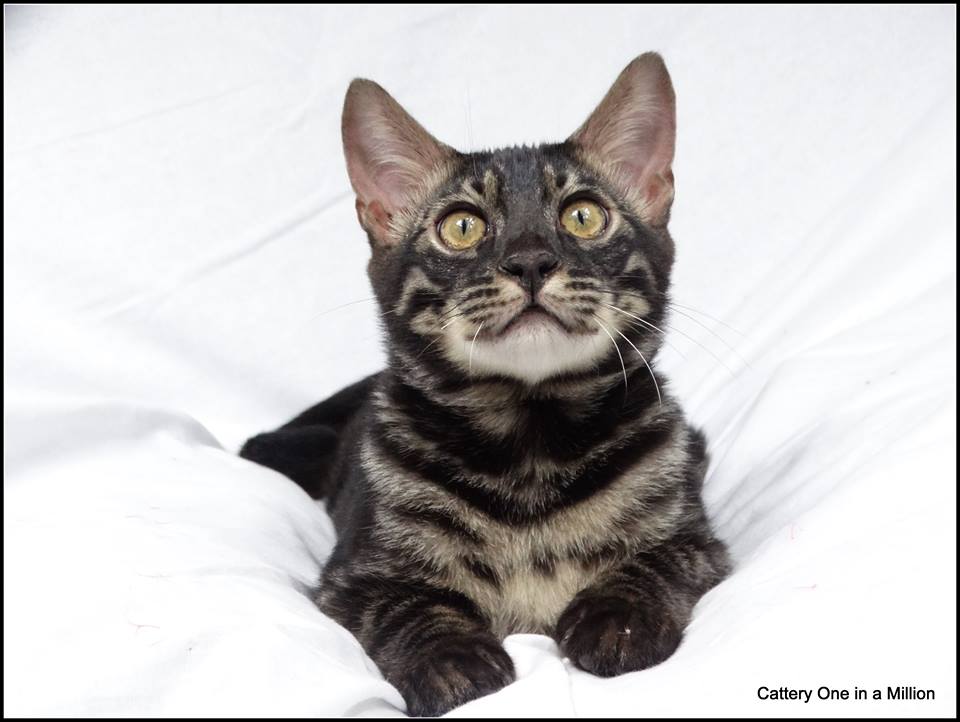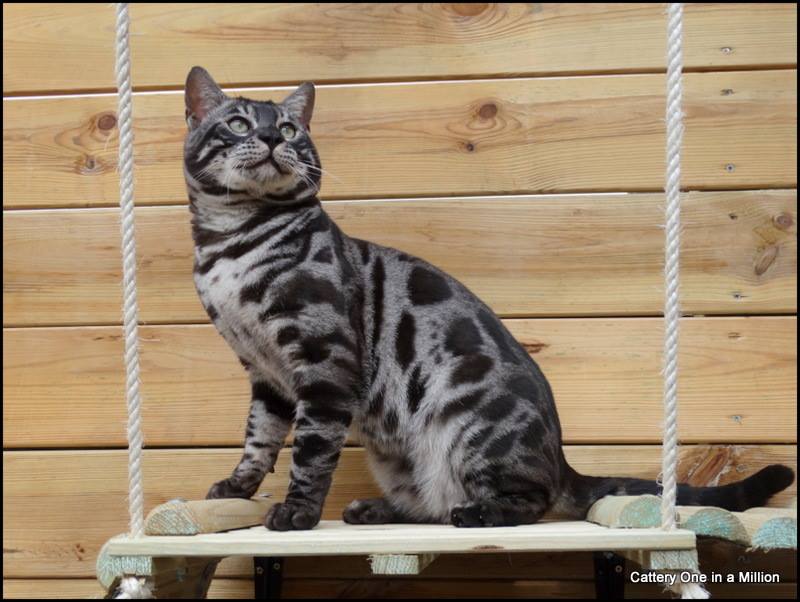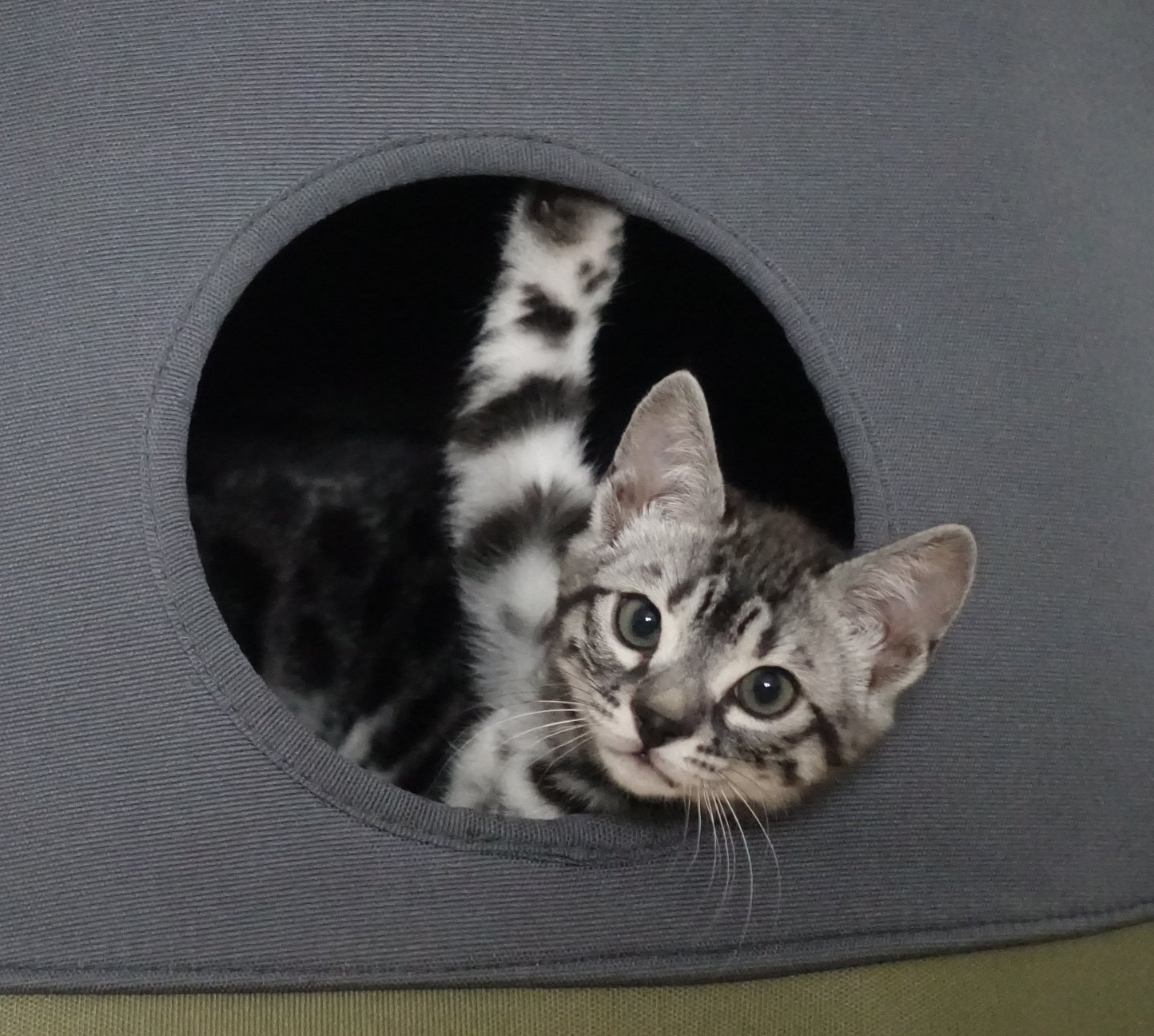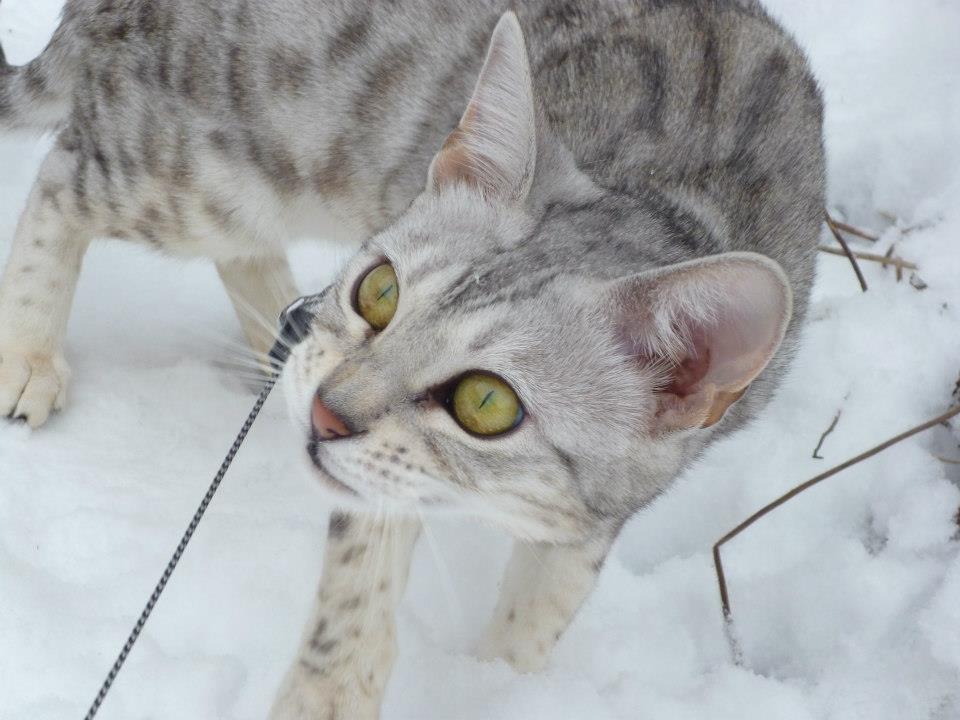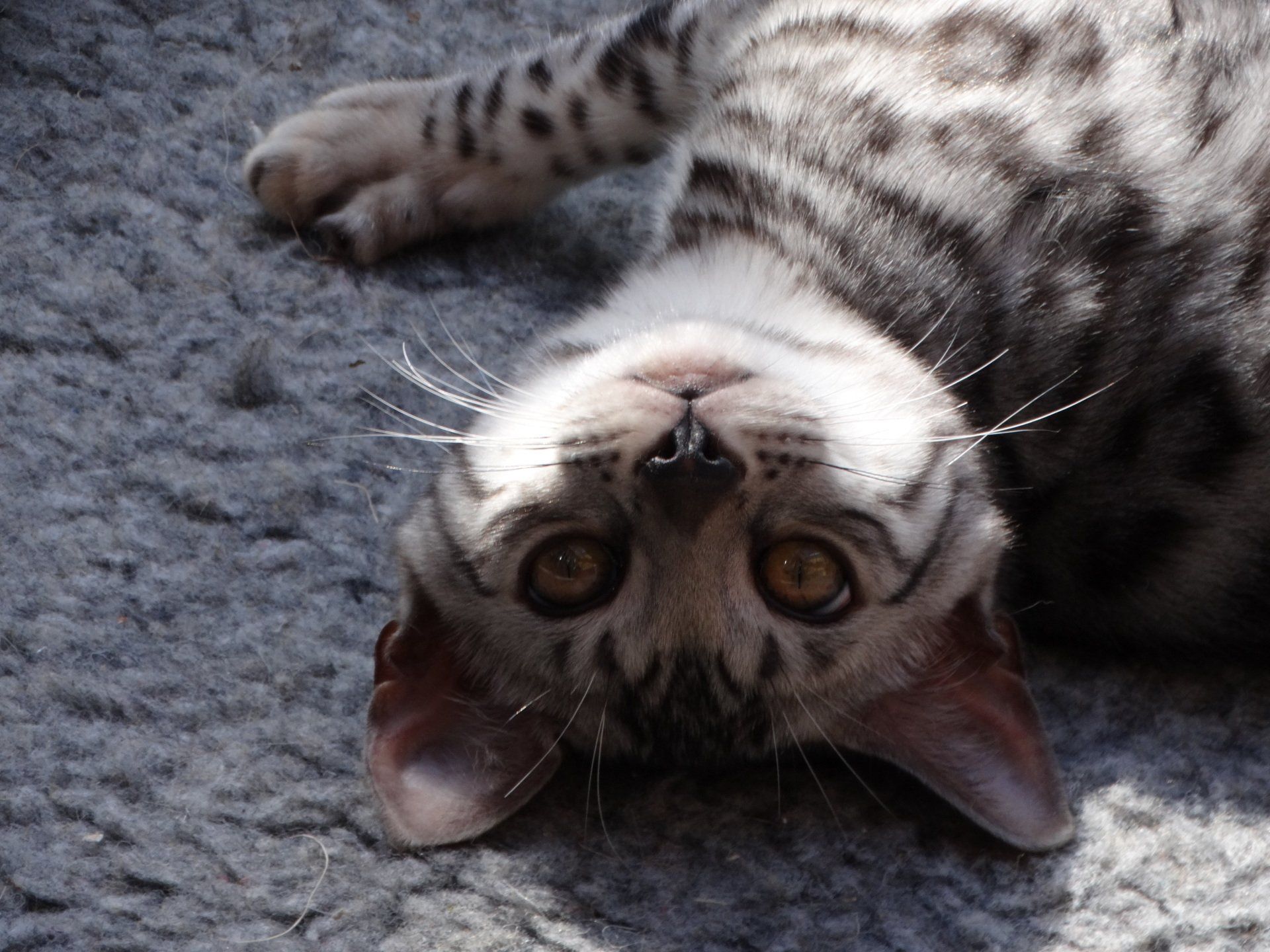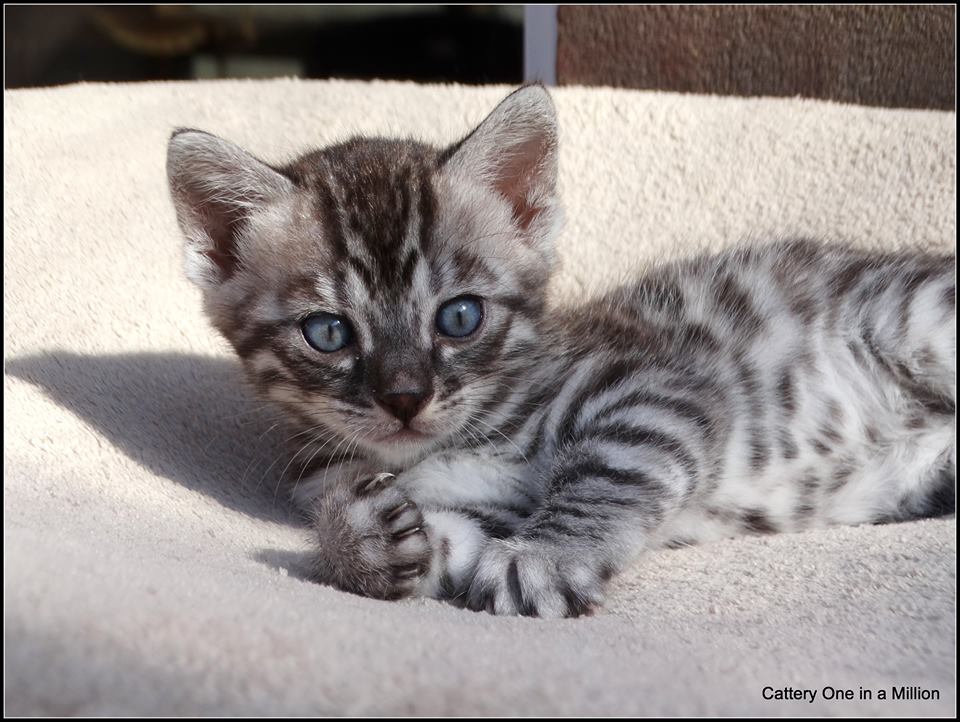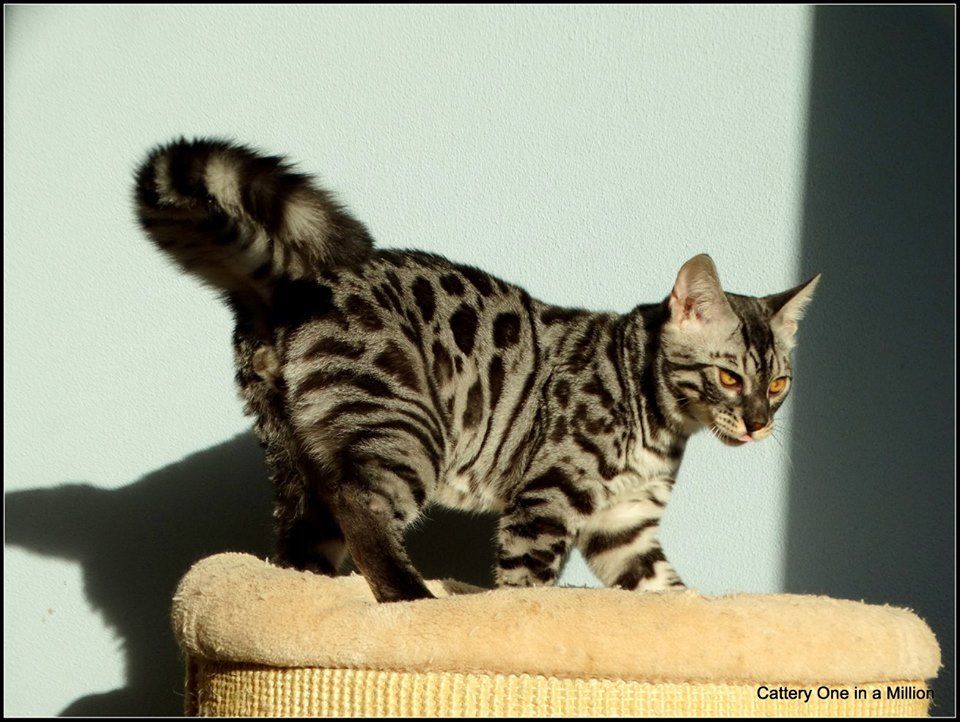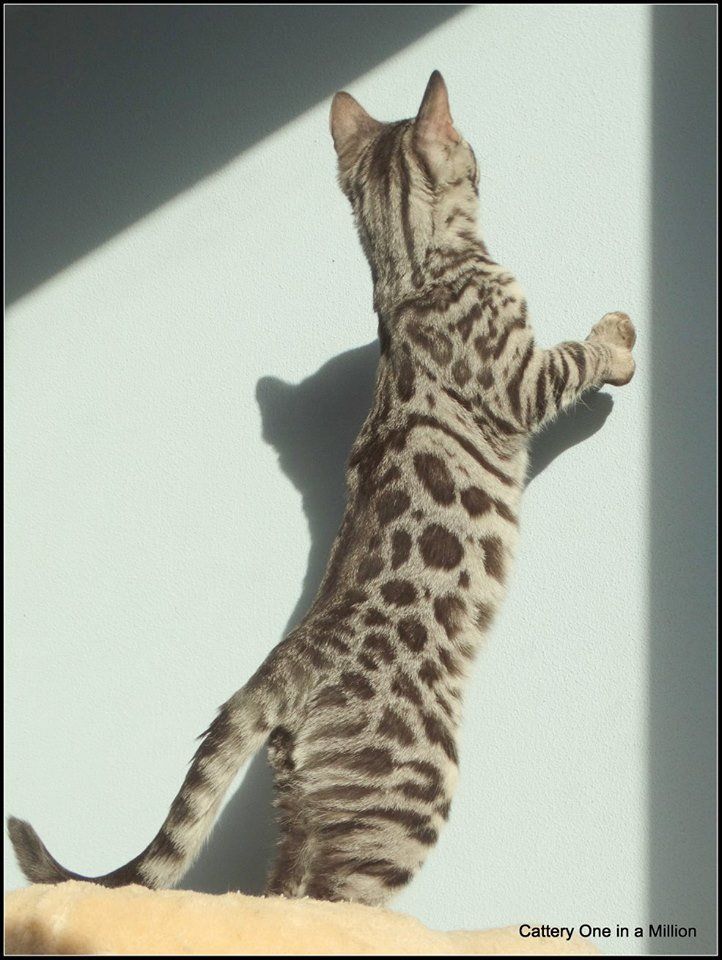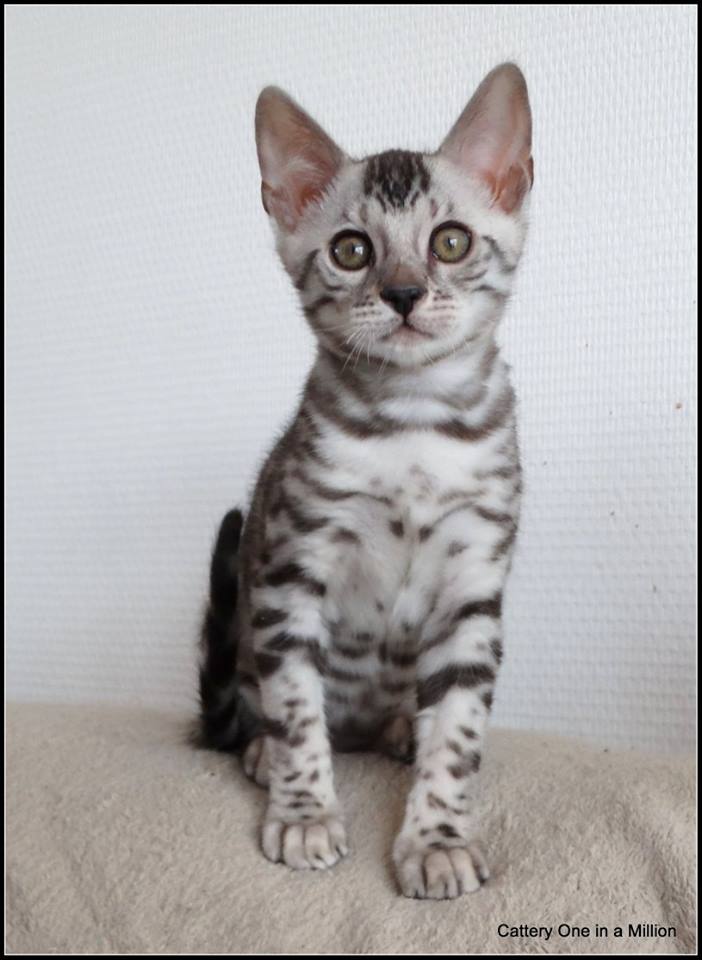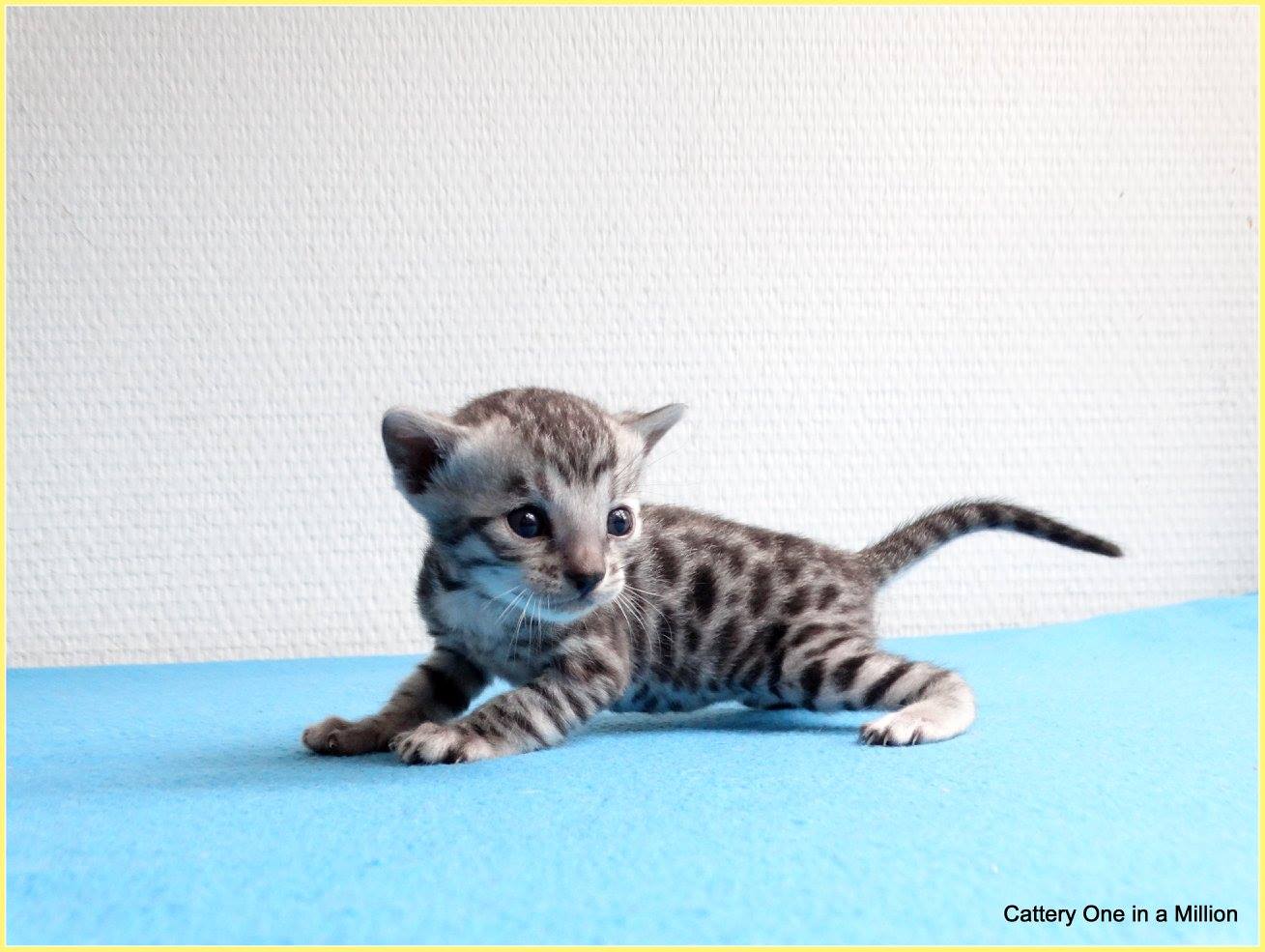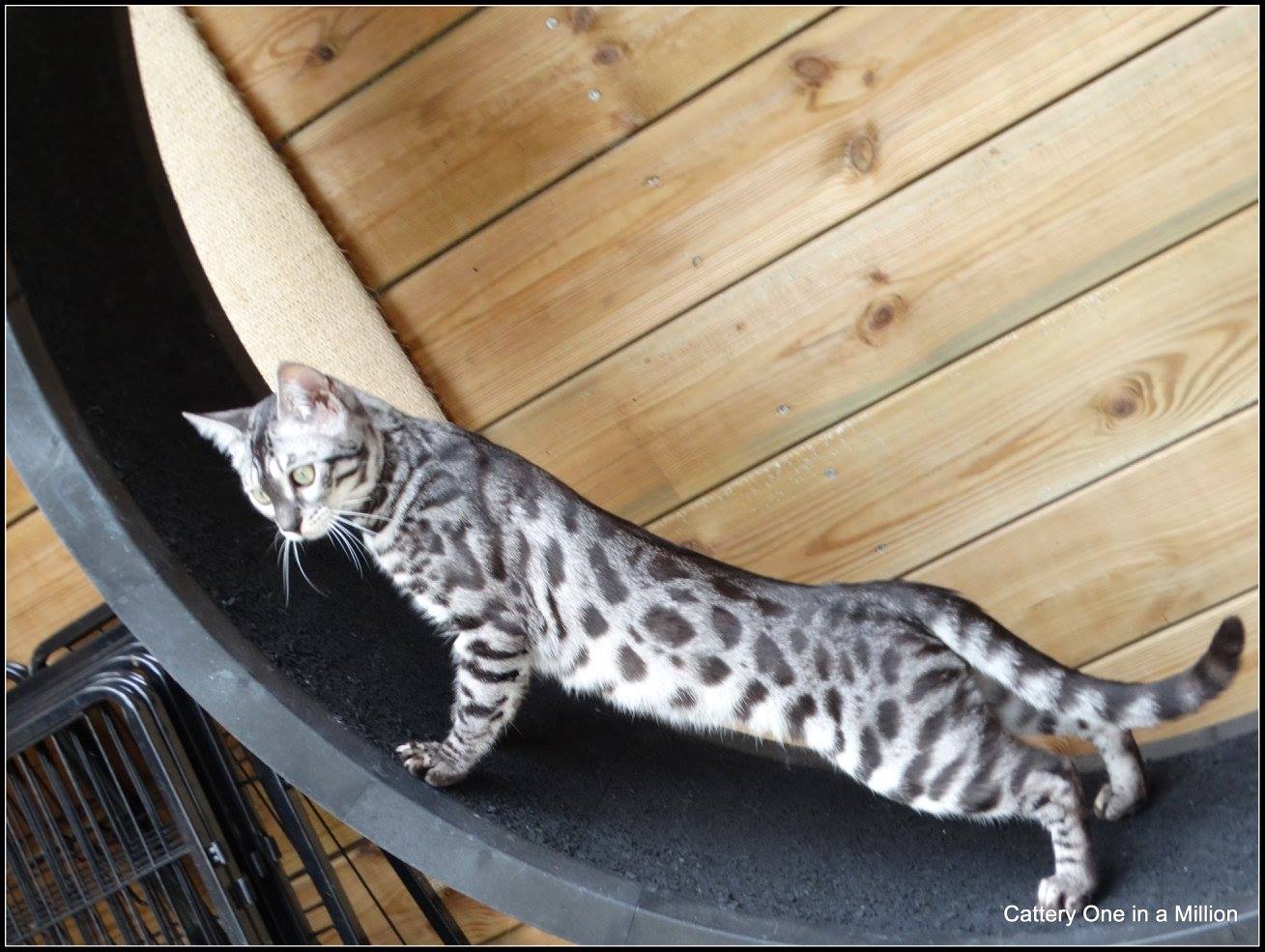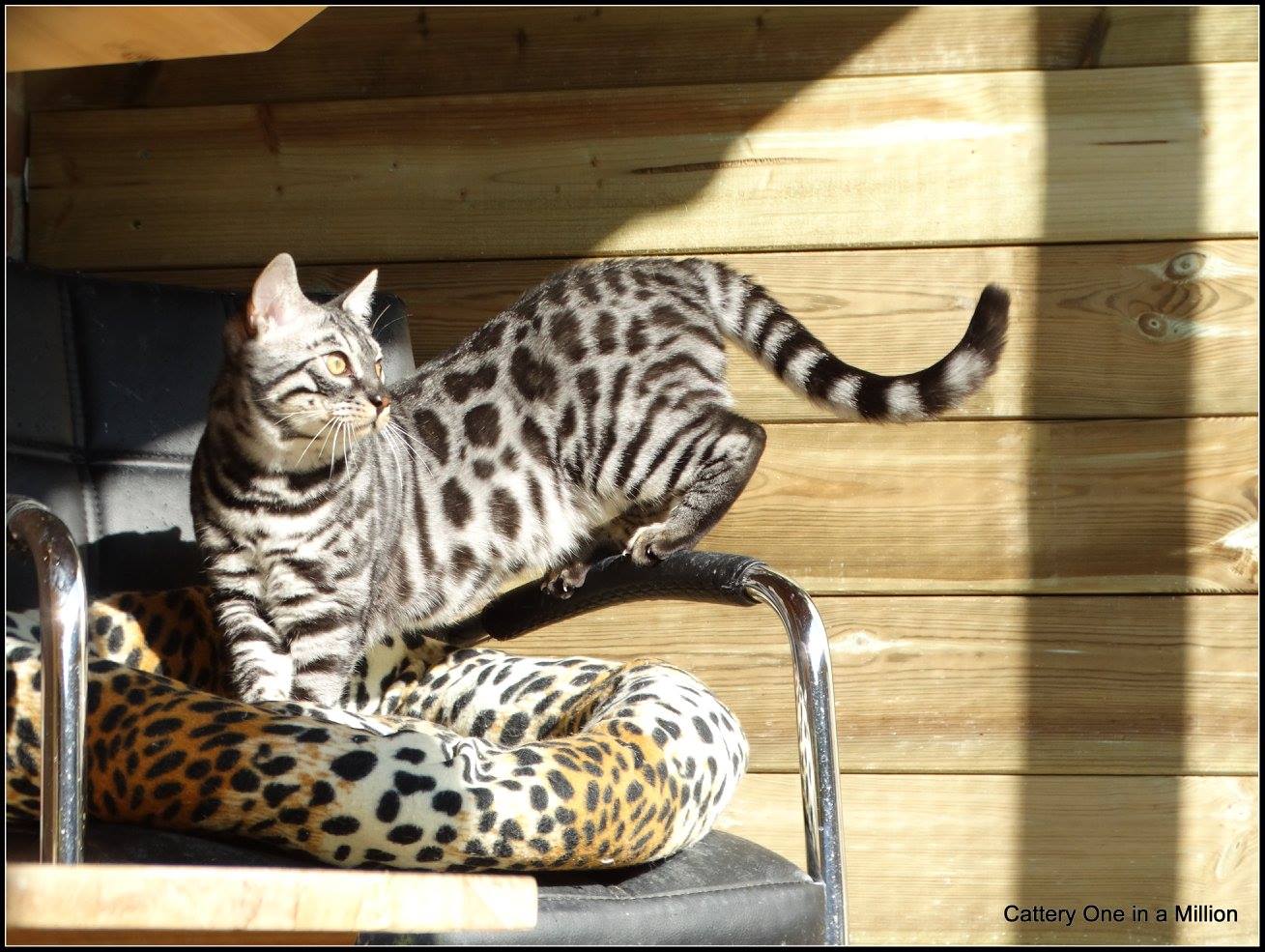The silver bengal
The silver bengal has the appearance of a snow leopard.
The heredity of the silver bengal
Unfortunately, it is not yet possible to test for the color silver via DNA. This makes breeding beautiful silver bengals a bit more difficult. The silver itself is not actually a color, but rather the lack of a color. This is due to the "inhibitor gene". This gene ensures that the production of pheomelanin stops, which is necessary for the production of the color / pigment. For breeding silver bengals you need at least 1 and preferably 2 silver bengals, so there is the greatest chance that the kittens also have a silver coat. With a silver parent there is a chance that a silver kitten will develop. The gene that causes the coat to become silver is dominant. In addition, it is also possible that brown kittens are born from 2 silver parents. All this depends entirely on the genes of the parents. Here's a little explanation: Every parent gives 1 gene to the kitten, it therefore depends on which genes the parent has. With silver there are 2 possibilities. A homozygous (II) silver - 2 x the silver gene present A homozygous parent always passes on the gene for silver to the kitten, a silver kitten will then always be created A heterozygous (Ii) silver - 1 x the silver gene are present Are both parents heterozygous then there is a chance that the kitten will receive the gene for brown from both parents. Expressed as a percentage, the chance of 2 parents being heterozygous is 25%. Silver kittens 25% (homozygous, i.e. the silver gene of both parents) Silver kittens 50% (hetrozygous) With 1 homozygous parent and 1 heterozygote, you have a 50% chance of being homozygous kittens and 50% heterozygous. The kittens are always silver here. The above explanation can also be read by means of a diagram. i/i = full color , no silver I/i = heterozygous silver (ie carrier of brown) I/I = homozygous silver , 2 x carrier of the silver gene


